Identifying wildlife scat is a useful skill. Recognizing wildlife scat while enjoying the ourdoors can determine your safety. Nobody wants to camp near a bear cave. Collecting animal scat is a non-invasive way to study animal populations and communities.
Finding animal poop in your house is alarming. Your first question likely will be “what animal pooped here?” quickly followed by “how big of a problem is this?”
Jump to Poop Identification by Animal
- Rat vs Mouse Poop
- Squirrel Poop
- Bat Poop
- Raccoon Poop
- Opossum Poop
- Skunk Poop
- Groundhog Poop
- Rabbit Poop
- Deer Poop
- Coyote Poop
- Fox Poop
- Bobcat Poop
- Snake Poop
To help you out in your investigation, here is a comprehensive animal poop guide for the different pest species most likely to be a nuisance. You will find helpful information including a wildlife poop identification chart, animal droppings descriptions, comparisons, photos, cleanup and safety information, removal procedure, and more.
Animal Droppings in Attics
If you find animal poop in your home, the usual suspects are rats, mice, squirrels, bats, and raccoons. Occasionally, opossums and skunks can nest in your crawlspace and basement.
Rat and Mouse Poop
Distinguishing between mice or rat droppings is sometimes hard, but there are differences between the two. Both are dark brown or black capsule-shaped forms that can vary in tone depending upon the diet of the rat or mouse as well as the age of the dropping. Older droppings fade in color.
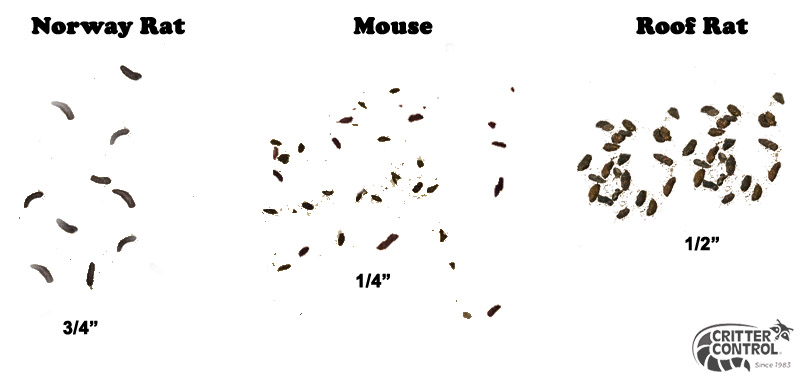
Mouse droppings are approximately 1/4″ (0.635 cm), roughly one-third of the size of rat droppings. Mouse poop is also tapered or pointed on the edges. Lastly, mice will disperse their poop in different areas of the attic. On the other hand, rat droppings are significantly larger at 1/2″ – 3/4″ of an inch, depending on the species. Rat poop is typically concentrated in one area, as they tend to designate an area for the bathroom.
Roof rat droppings (1/2″) are a little harder to identify because they are similar to mice in that they are tapered. However, Roof rat poop is roughly double the size. In comparison, Norway rats (3/4″) have thick, cylindrical poops with blunt ends, and often they will curve into a banana shape.
Is rat or mouse poop dangerous?
Caution is important when cleaning up mouse or rat feces as both mice and rats carry parasites and transmittable diseases from these rodents to people. Serious illnesses such as Hantavirus, Salmonellosis, bubonic plague, and rat-bite fever are rare. These often spread through food contamination or transmission by air. They are most likely to occur in places where a mouse or rat infestation has occurred. That being said, do not head the issue lightly as the illnesses can be life-threatening. Additionally, rat and mouse droppings are known to cause and worsen asthma.
What Does Squirrel Poop Look Like?
With a much more diverse diet, squirrel poop is often distinguished by its varied coloration. Squirrel scat can often present itself in hues, including beige, light brown, dark brown, green, and black. Typically, the scat groupings are more spread out (larger gaps between poops) relative to other rodent counterparts, likely because they are larger creatures.
In terms of size, expect anything between 3/8 to 1 inch, with 1/8 inch diameter. Squirrel poop is dangerous, as it is known to carry salmonellosis, tularemia, and leptospirosis. Squirrel poop vs Rat poop
As squirrel and rat rodent poop overlap in length, if no obvious color differences exist, look to width and shape. Squirrel droppings are even thicker and cylindrical (think of a wooden barrel) than rats.
What Does Bat Poop Look Like?
Bats are one the most unique species in wildlife, and there are 47 species in the United States. Bat droppings in the attic can easily be mistaken for mouse droppings in size and shape. The primary difference between them is that bat droppings often occur in larger mounds or piles, as bats roost (hang) in the attic or living space. Additionally, bat poop can be irregular from one dropping to the next, while mouse poop is similar.
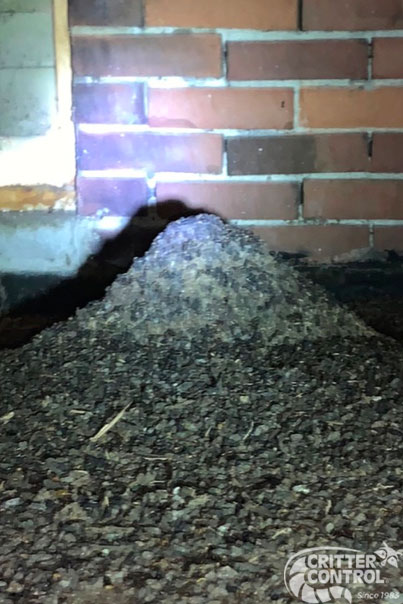
There is one useful bat-dropping identification trick, but this does not always work. As bats commonly eat up to 2/3 their weight in insects, their excrement often leaves behind the tough outer shells of insects such as beetles. This gives bat poop a shiny or speckled coloring.
Bat waste is also known as guano, coined from the South American Andean indigenous language, Quechua. These peoples used the dung as agricultural fertilizer due to its high nitrogen, phosphate, and potassium content!
Is bat poop dangerous?
Bat poop is known to cause Histoplasmosis, a lung infection. Bats can carry rabies but this is incredibly rare for the species. Nevertheless, avoid handling bats or their poop.
What Does Racoon Poop Look Like?
Raccoon scat is typically 2-3″ in length, and tubular. Raccoons tend to defecate in the same area called latrines.
Raccoon poop often contains undigested materials which give texture, such as seeds, berries, or bits of bone. They often leave the droppings in two or three segments sitting side by side or stacked on top of one another in different directions.
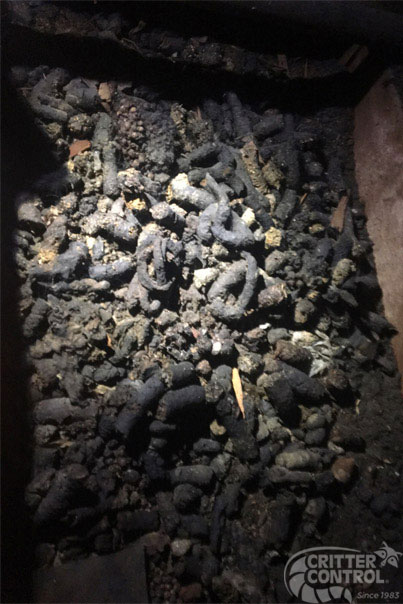
Is raccoon poop dangerous?
Raccoon feces can contain roundworm and roundworm eggs. People and pets can inhale the parasite when the raccoon latrine sites get disturbed.
Backyard Animal Poop Identification
What Does Opossum Poop Look Like?
Opossum scat falls in the range of 3/4″–2″ in length. The poop is smooth and may develop a unique white or yellowish coloration. Notably, the Opossum poop tends to curve into a C shape like rat poo, which is the telltale giveaway. Sometimes, opossum scat is tapered.
What Does Skunk Poop Look Like?
Skunk poop and raccoon poop look similar. Skunk poop look more like cat poop, thicker and cylindrical, 1/2″ in diameter and 1 to 2″ in length. The skunk poop is thickest in the middle and often tapers toward the end. However, the skunk scat sometimes forms into piles.
With an omnivorous diet high in insects, berries, worms, and roots, the appearance is often rougher, irregular, and full of undigested content such as blackberry seeds. Coloration might have a purple or blue hue.
What Does Groundhog Poop Look Like?
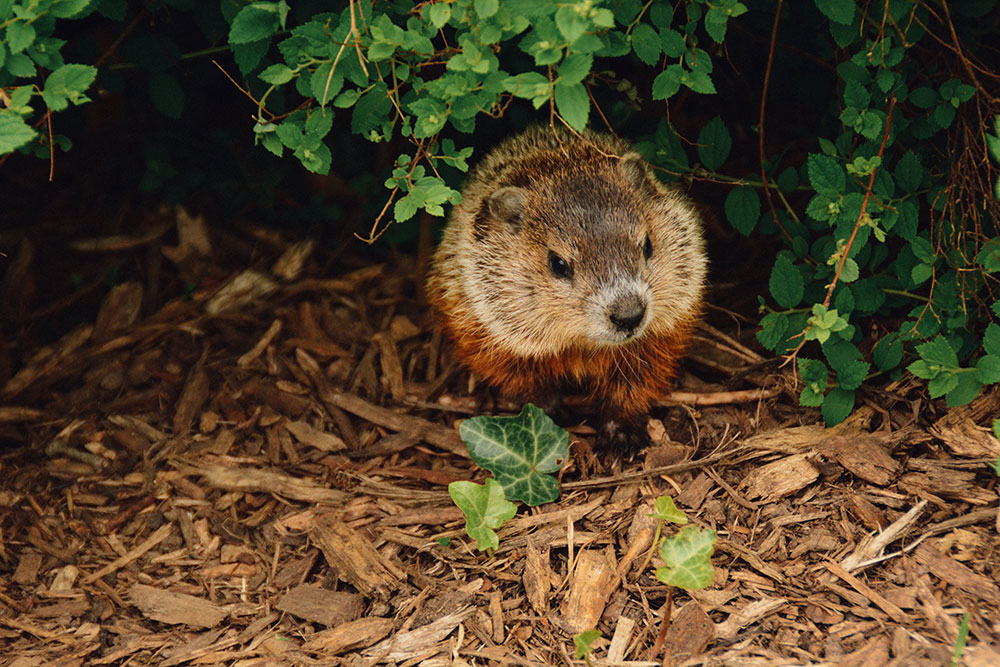
Groundhogs (also known as woodchucks) are an unlikely occurrence in your attic or house, as they prefer to burrow underground. These critters might burrow under a bush in the landscaping, or you have an elevated house or deck, this may be an inviting spot. Groundhogs are another species known to wreak havoc in your nicely tended garden.
Notoriously lazy, they may even set up a burrow nearby. This way, they do not have to travel far from that buffet brimming with your nutritious veggies. Groundhogs love to eat strawberries, blueberries, corn, lettuce, cucumber, and green beans. They may also dig up the yard in search of grubs, worms, and snails.
Groundhog scat is medium-sized, similar in size to a skunk or raccoon. The droppings are oval-shaped, dark brown or black, and often in segments. They will often find a spot nearby the burrow, which will help in identification.
What Does Rabbit Poop Look Like?
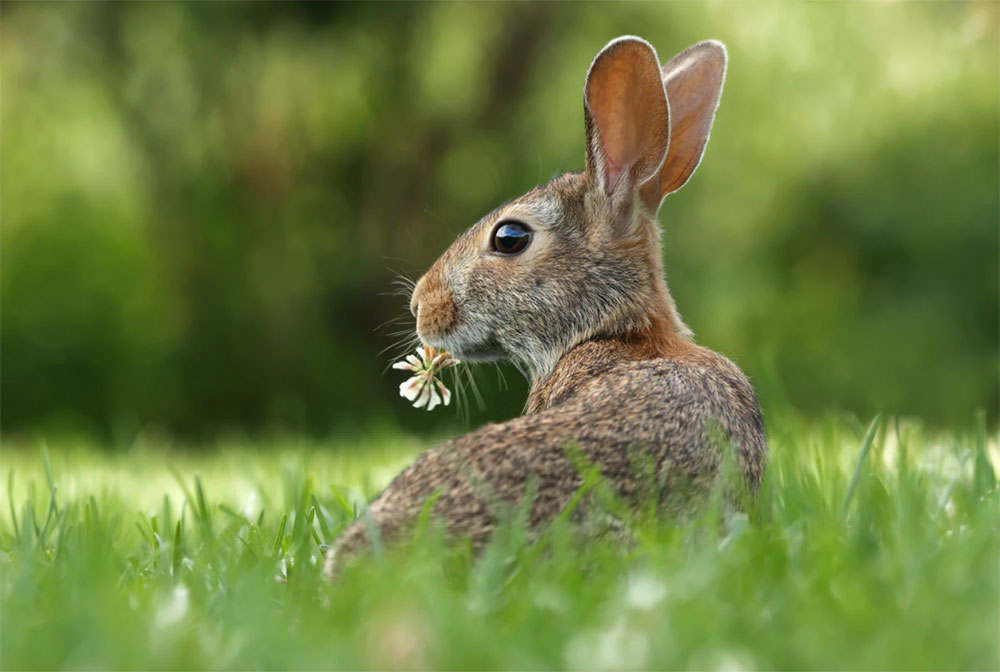
Wild rabbit poop is very easy to identify. The “pellets” are perfectly spherical and typically come in a neat pile. The color of rabbit droppings is typically brown or black, commonly visualized as large peppercorns. Rabbits rarely enter a home but tend to be notorious for taking a healthy share of the garden harvest you’ve worked so hard for.
What Does Deer Poop Look Like?
Deer are directly below rabbits due to the similar scat. Equally dangerous to your garden, deer are a common presence in heavily wooded areas or residential areas near fields. Deer scat is also spherical and small like a rabbit, however, they have more of a raindrop or pointed egg shape. The deer poop also occurs in large quantities.
What Does Coyote Poop Look Like?
Coyote droppings vary greatly in size, although on average they measure between three and four inches long and are about one inch in diameter. The color and consistency of coyote scat depends on the diet of the pest. Coyotes that primarily feed on livestock and other animals will produce dark, soft scat that contains fur and bones. Those that consume a lot of fruit will produce crumbly droppings that are lighter in color.
What Does Fox Poop Look Like?
Fox droppings are similar to coyote scat, only smaller. Typically, their feces are tan or brown and about two to three inches long with pointy ends. A fox’s variable diet affects the appearance of its feces, so waste may contain bones, hair, insects, and bits of fruit or seeds. In rural areas, fox poo is quite dark, but in urban areas, where foxes eat human food waste, it can be lighter.
What Does Bobcat Poop Look Like?
Usually, bobcat scat is tubular and black or brown in color. It is easy to mistake for dog droppings. However, wildcat waste will usually contain fur or bones due to the animals’ diet. Homeowners may find bobcat poop on the ground near urine spray marks on trees, decks, or outbuildings.
Homeowners who see bobcat droppings near the house should be wary of conflicts and keep pets indoors. While many animals deposit their droppings at random, this is not always the case for bobcats. The pests mark their territory with feces and urine, which serves as a warning to other wildlife. These wildcats have a home hunting range of up to 20 miles.
Reptiles Poop Identification
Snake Poop
Snake poop is typically brown, with coloration matching other animals in this list. What differentiates the snake scat is the lack of form, as the consistency of snake poop is watery due to the lack of plant materials in their diet. Snakes have a cloaca, meaning urine and poop come from the same spot. Because of this, the urine often leaves distinct white streaks or piles. Thus, if you see any white droppings in the attic, it is likely a snake or songbird (poop is entirely white).
Roach vs Mouse Droppings
Cockroach poop, cylindrical, solid feces, is often mistaken for mouse droppings. However, there are a few distinct giveaways. Mouse poop is typically tapered. The cockroach poop will not be tapered. Also, it is similar in shape to rat poop with rounded or blunt edges. However, the size is closer to mouse poop, albeit slightly smaller. Another distinction in roach poop is the ridges running down the length of the poop. These are not common in mouse droppings.
What Do I Do if I Find Scat in My Home?
If you found scat in your home, you probably have a wild animal living with you. As much as we love animals, they are not paying rent, they can be destructive, use your dwelling as a bathroom, and top it off they can make annoying noises.
There are many DIY options, with hundreds of poisons, traps, homemade deterrents, and snake oils. Unfortunately, these are often ineffective or temporary solutions to a wider issue. Moreover, DIY wildlife removal solutions are unlikely to act as humanely as a specialist will, and involve putting yourself in a dangerous position with the named illnesses.
What is truly needed is professional removal services from an experienced wildlife specialist with all the tools to find the entrances, patch them up, and make the living spaces inaccessible. Additionally, these agents have the proper safety attire for professional cleanup and sterilization with the proper chemicals to keep you safe.


